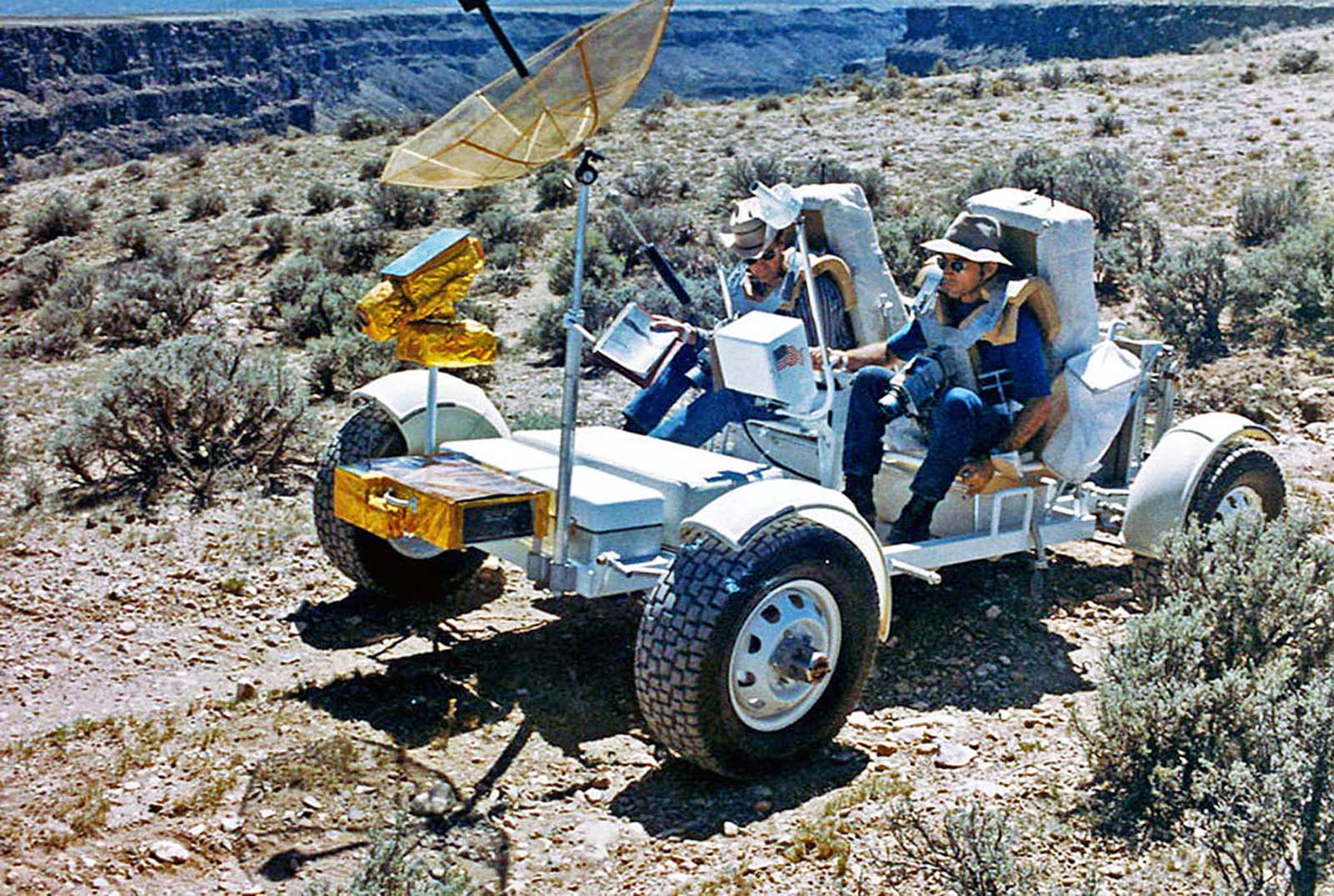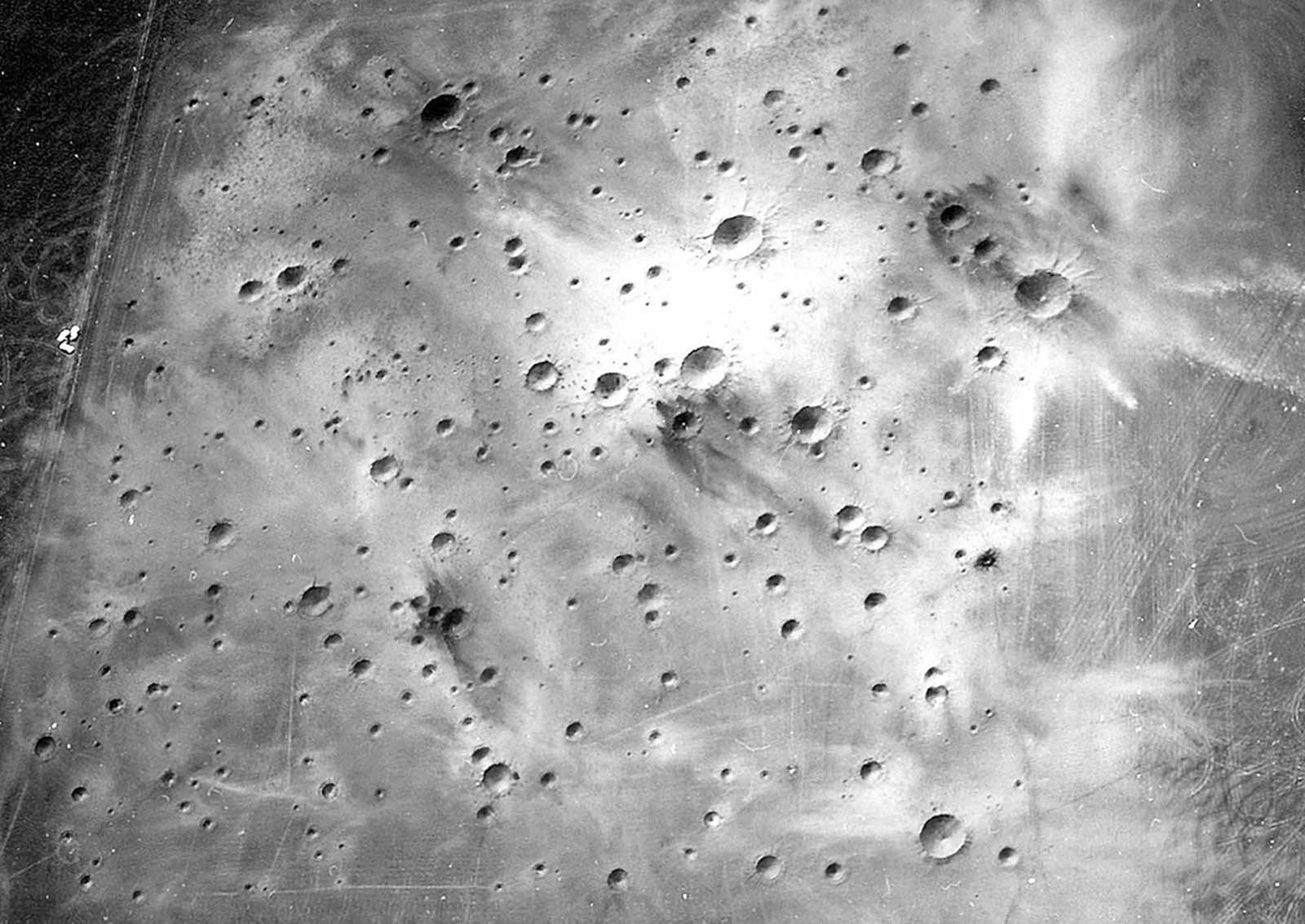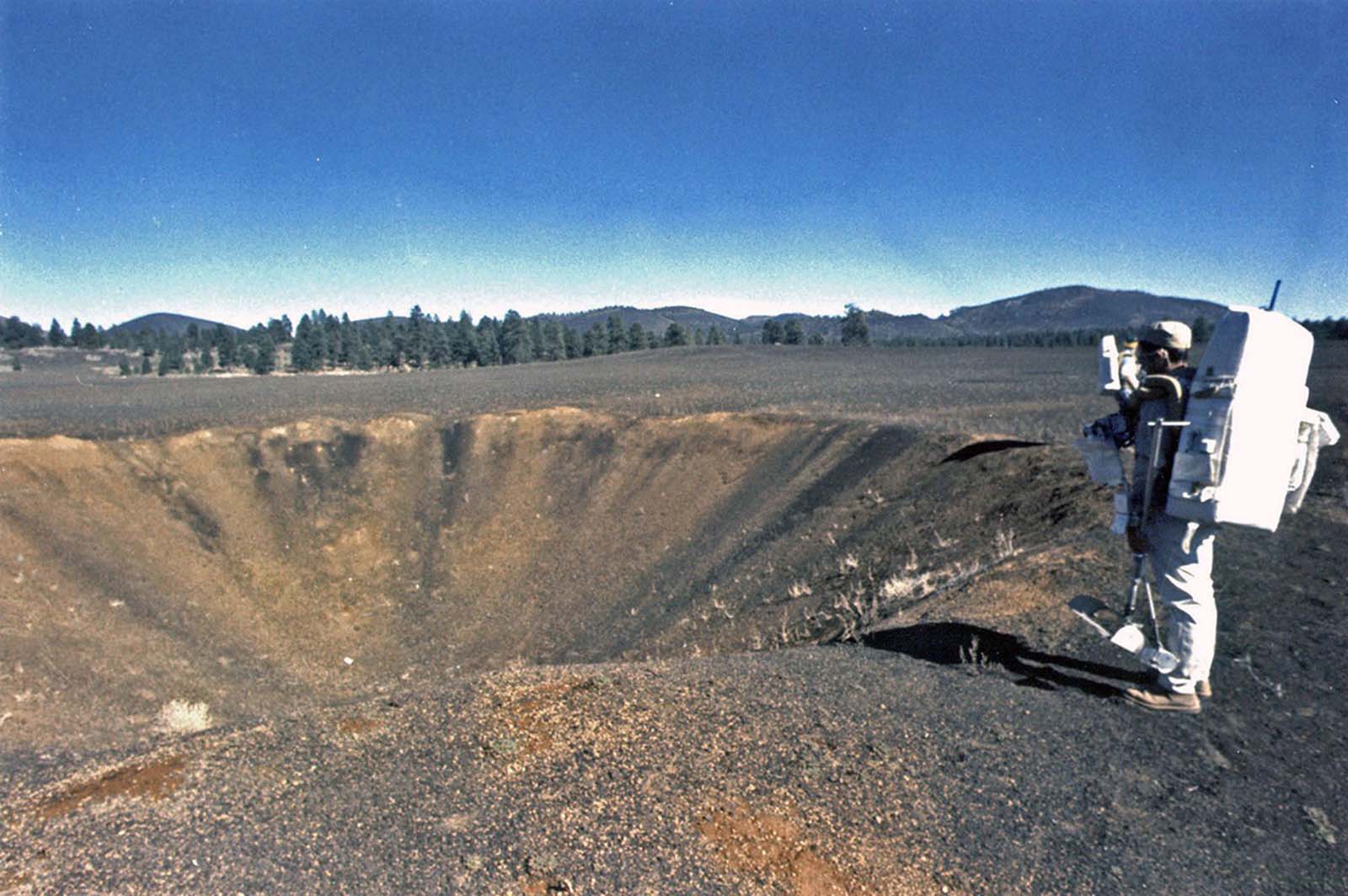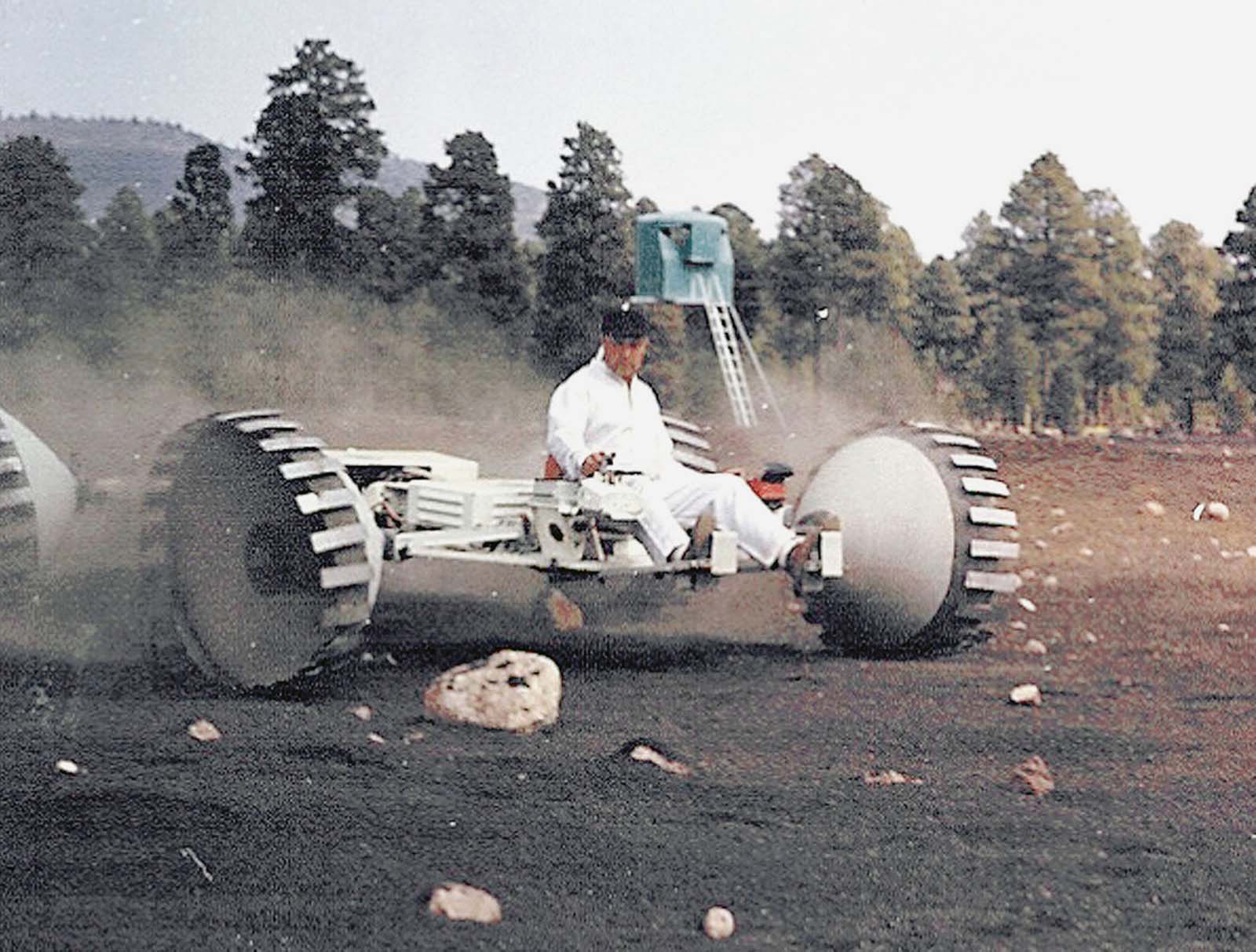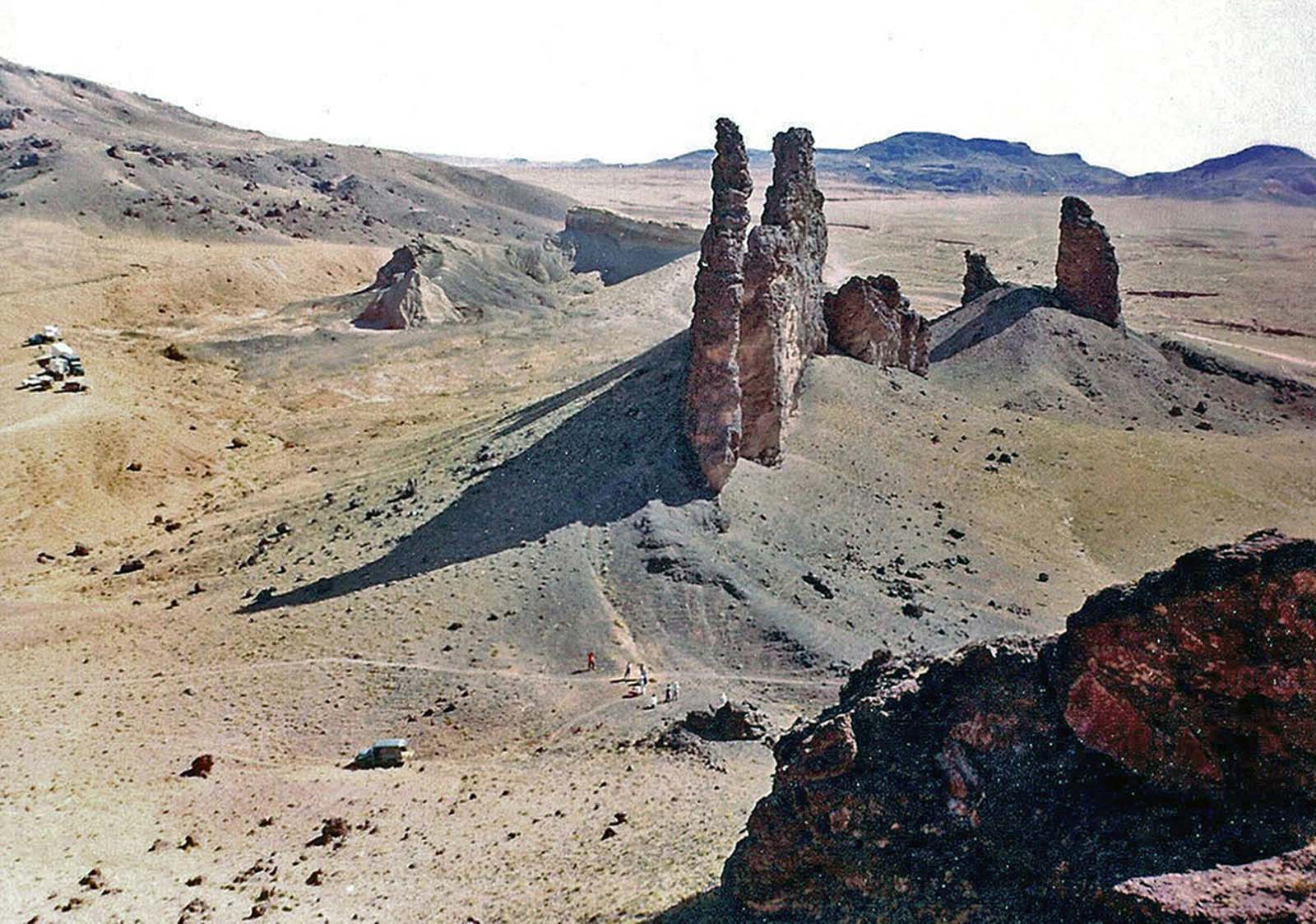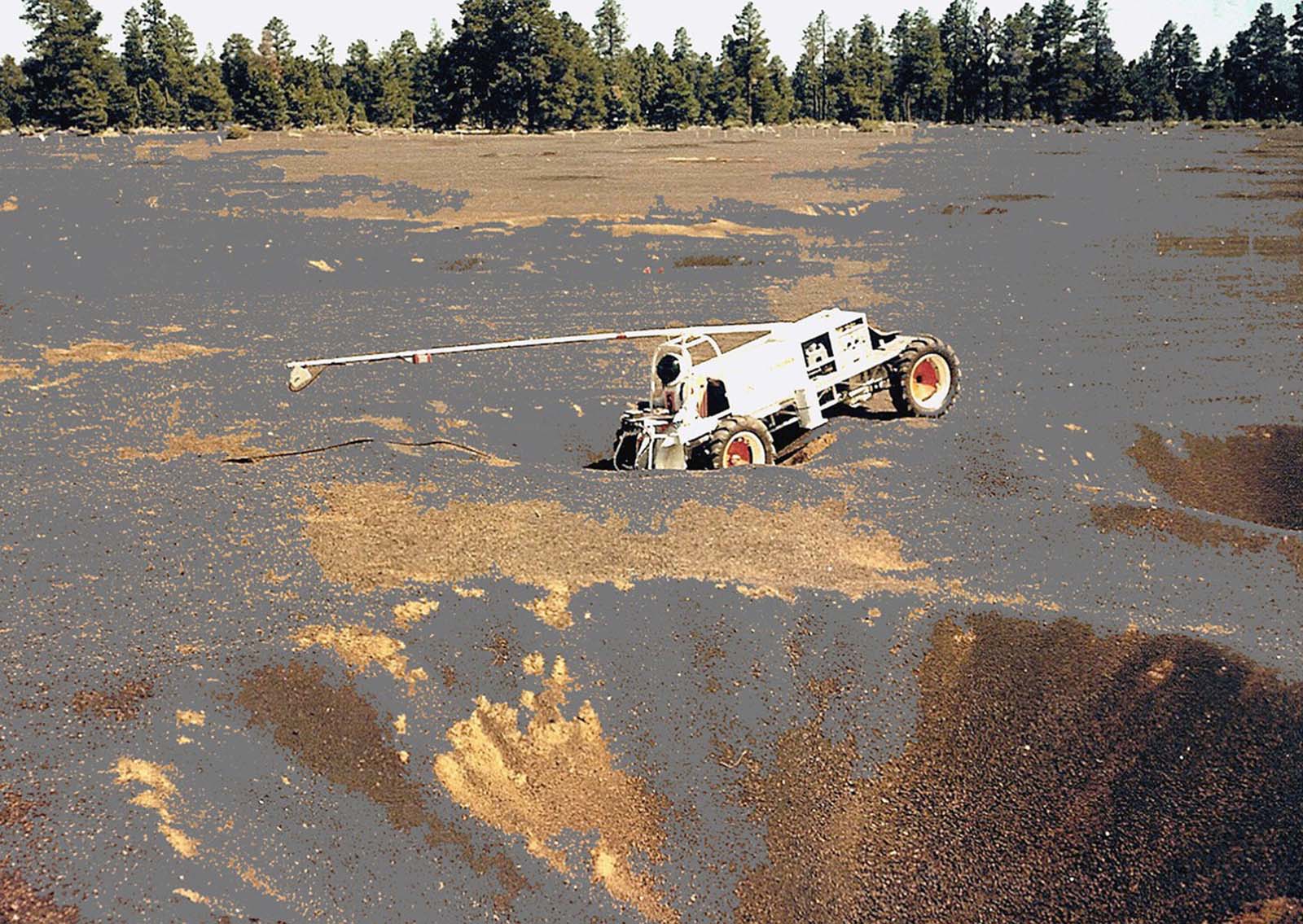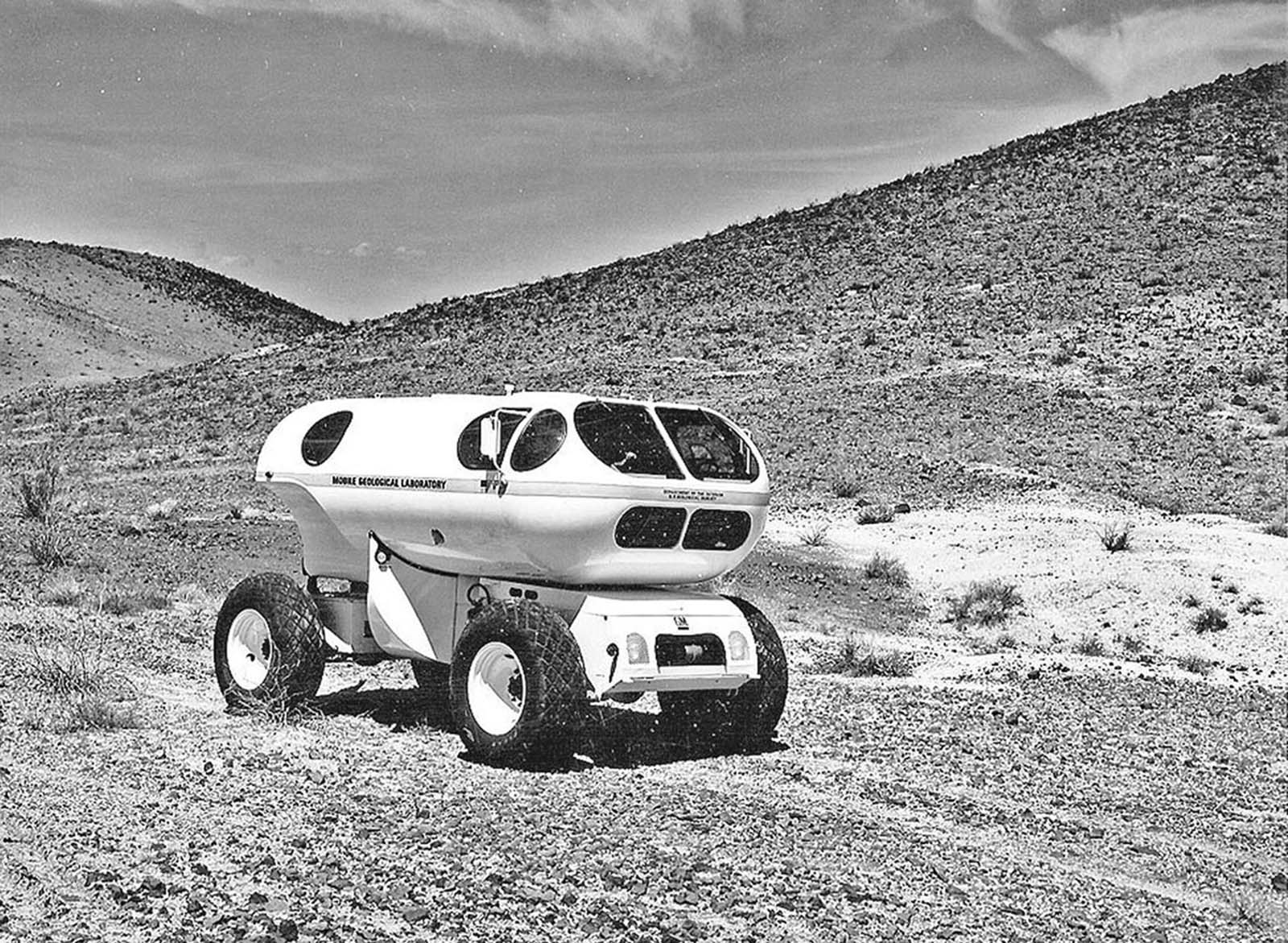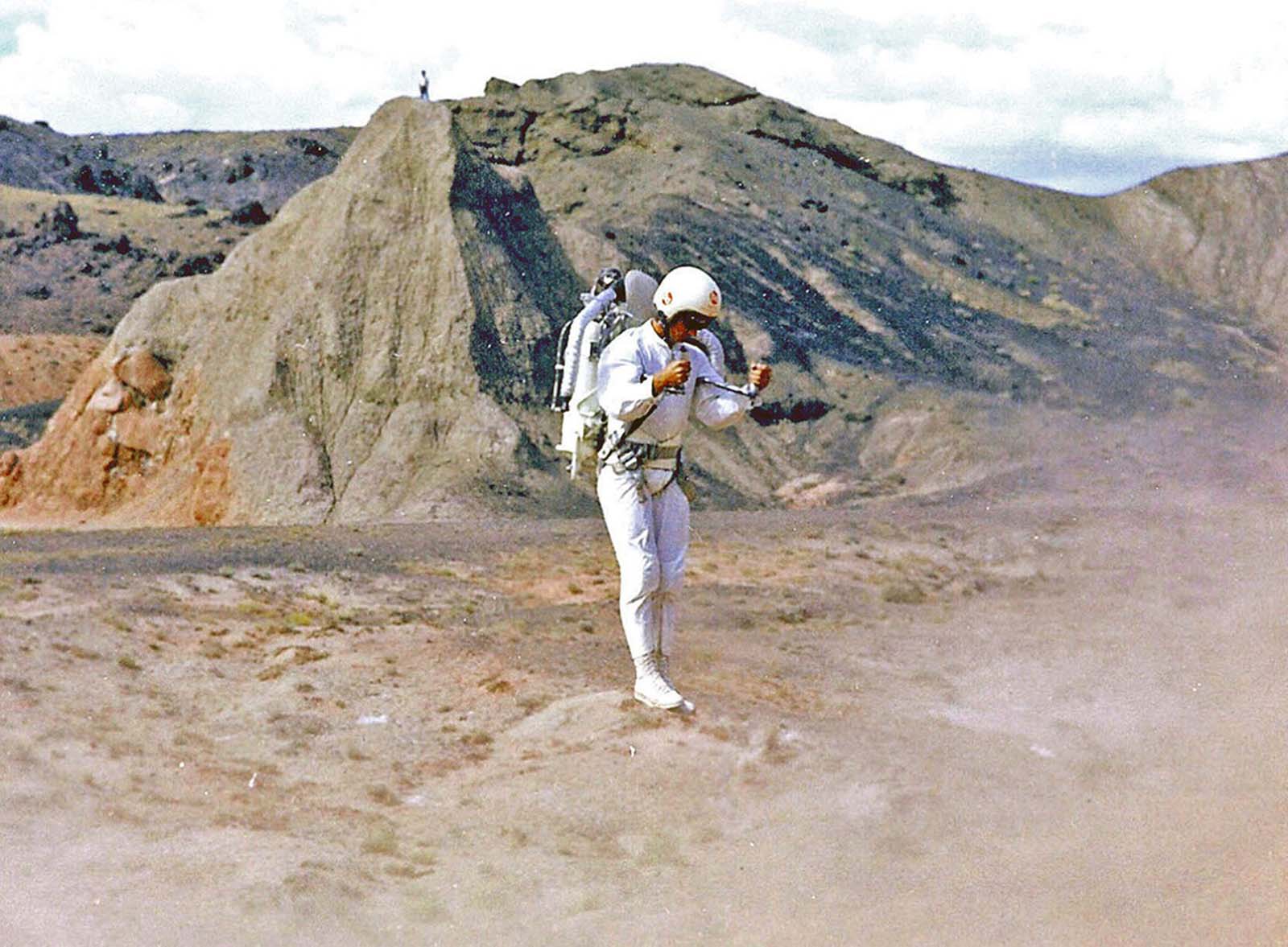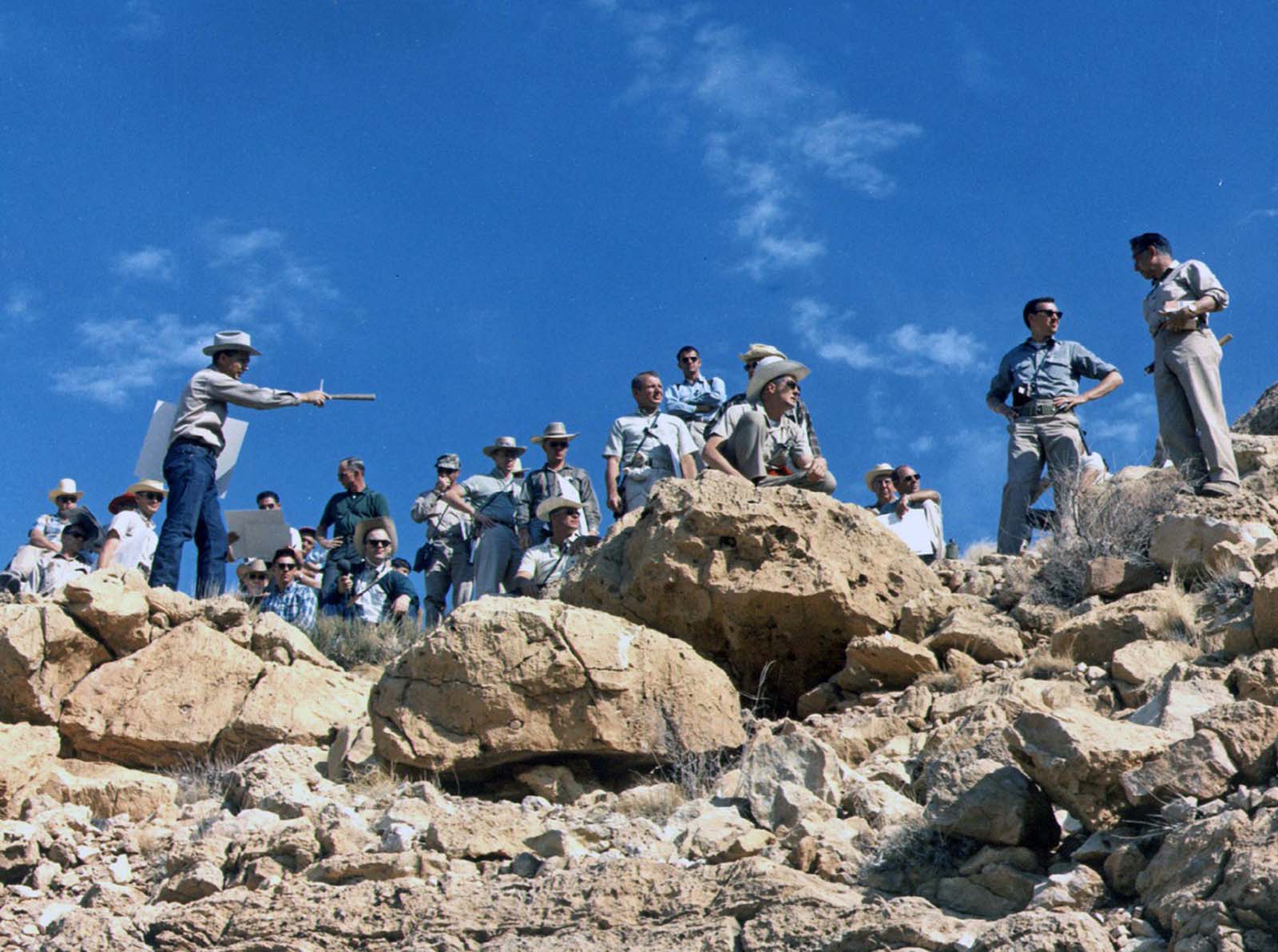NASA needed a geologically diverse landscape, one rugged and raw, torn and pummeled, and still bearing distinctive scars from a rowdy past. Arizona had plenty of existing craters, exposed canyons, volcanic cinder cones, and lava fields to test NASA’s people, suits, vehicles, and equipment. Scientists thought the volcanic cinders of the terrain might be similar to what astronauts would find on the moon. Additionally, the nearby Meteor Crater, the best-preserved impact crater on earth, and the great cosmic gash of the Grand Canyon, provided an unmatched geological classroom. Between January 1963 and November 1972, scientists based in Flagstaff would lead 200 separate geological field-training exercises for NASA’s astronauts. In 1967 Nasa decided to bring the moon to Flagstaff – or at least a simulation – by blasting craters of their own. Working with the Astrogeology Science Center, a division of the US Geological Survey established in Flagstaff to study solid bodies in the solar system, explosives were used to blow hundreds of craters in the volcanic terrain north of town. Apollo ran from 1961 to 1972, with the first crewed flight in 1968. It encountered a major setback in 1967 when an Apollo 1 cabin fire killed the entire crew during a prelaunch test. After the first successful landing, sufficient flight hardware remained for nine follow-on landings with a plan for extended lunar geological and astrophysical exploration. Budget cuts forced the cancellation of three of these. Five of the remaining six missions achieved successful landings, but the Apollo 13 landing was prevented by an oxygen tank explosion in transit to the Moon, which destroyed the service module’s capability to provide electrical power, crippling the CSM’s propulsion and life support systems. Apollo set several major human spaceflight milestones. It stands alone in sending crewed missions beyond low Earth orbit. Apollo 8 was the first crewed spacecraft to orbit another celestial body, and Apollo 11 was the first crewed spacecraft to land humans on one. (Photo credit: USGS / Alan Taylor). Notify me of new posts by email.
Δ Subscribe
